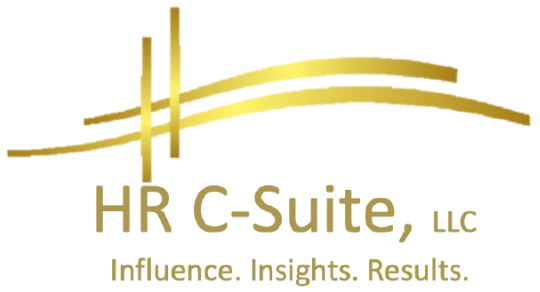In the comic books, superheroes often have one defining power that sets them apart, making them capable of feats beyond the ordinary. In today's business world, if there's one superpower that organizations need to harness, it's continuous learning. It's not just about staying relevant; it's about leading the charge into unexplored territories of innovation, adaptability, and growth. Let's explore why continuous learning isn't just beneficial but essential in this new era of work.
The Changing Landscape of Work
Gone are the days when a degree or a fixed set of skills could carry you through a 40-year career. Today's work environment is dynamic, with technology evolving at breakneck speed, market demands shifting like sand dunes, and global events throwing curveballs at every turn. Here's how the landscape has changed:
• Technological Disruption: AI, machine learning, blockchain, IoT - the alphabet soup of tech innovations requires constant upskilling to stay ahead.
• Globalization: Competition isn't local; it's global. Understanding different markets, cultures, and regulations needs ongoing education.
• Economic Shifts: From pandemics to economic downturns, adaptability is key, and that comes from learning how to pivot business models and strategies.
Why Continuous Learning is a Superpower
- Innovation at its Core:
• Creative Solutions: When learning is part of the culture, employees are more likely to think outside the box. Companies like Google and 3M give employees time to learn and innovate, leading to groundbreaking products.
• Fostering an Innovation Ecosystem: Continuous learning encourages an environment where ideas are shared freely, not hoarded, leading to a collective brain trust. - Adaptability and Resilience:
• Surviving Disruption: Companies that learn continuously can adapt to changes in the market or technology. For instance, Netflix transitioned from DVD rentals to streaming, a move made possible by a culture of learning and foresight.
• Employee Resilience: When individuals are used to learning, they're better at navigating through career or industry changes without fear.
- Enhanced Employee Engagement:
• Career Progression: Learning opportunities can be directly linked to career advancement, making employees feel valued and invested in.
• Satisfaction and Retention: According to Linkedin’s Workplace Learning Report, 94% of employees would stay at a company longer if it invested in their career development.
- Attraction of Top Talent:
• Competitive Edge: In a world where talent is the new currency, companies known for fostering learning attract individuals who are eager to grow.
• Diverse Skill Sets: Continuous learning means you're not just hiring for what someone knows now, but for their capacity to learn and adapt.
- Customer Satisfaction:
• Understanding Customer Needs: As markets evolve, so do customer expectations. Continuous learning keeps teams updated on these shifts, improving service and product offerings.
• Proactive Problem Solving: Learning equips employees to anticipate and solve customer problems before they escalate.
Implementing Continuous Learning
Here’s how organizations can make learning not just an activity but a part of their DNA:
A. Establish a Learning Culture:
• Lead by Example: Leaders should be seen learning, attending workshops, or discussing new industry trends to set the tone.
• Encourage Curiosity: Reward questions and exploration. Companies like Pixar have 'Braintrust' meetings where everyone is encouraged to learn and critique.
B. Invest in Learning Infrastructure:
• Learning Management Systems (LMS): Platforms like Coursera for Business or LinkedIn Learning can cater to diverse learning needs.
• Microlearning: Short, impactful learning sessions can fit into busy schedules, making learning a daily habit rather than an event.
C. Develop Personalized Learning Paths:
• Skilling Mapping: Understand what skills are needed now and in the future, then tailor learning experiences to individual career paths.
• Mentorship and Coaching: Pairing employees with mentors can provide personalized growth opportunities.
D. Make Learning Part of Performance:
• Learning KPIs: Include learning goals in performance reviews, not just outcomes.
• Celebrate Learning Milestones: Just as you celebrate sales targets, celebrate learning achievements.
E. Leverage Technology and AI:
• AI-driven Learning Recommendations: AI can analyze employee performance and recommend courses that would be most beneficial.
• Virtual Reality (VR) and Augmented Reality (AR): For hands-on skills, VR can simulate environments that are costly or risky to replicate in real life.
F. Continuous Feedback Loop:
• Learning from Mistakes: Foster an environment where mistakes are seen as learning opportunities.
• Regular Updates: Keep learning programs fresh with feedback from the learners themselves.
Wrapping it Up
In this new era where change is the only constant, organizations equipped with the superpower of continuous learning will not only survive but thrive. They'll innovate where others stagnate, adapt where others falter, and grow where others shrink. Continuous learning transforms employees into lifelong learners, turning the workplace into a hub of ideas, growth, and resilience.
For companies, this isn't just about keeping up; it's about setting the pace, being the industry leader, and creating an environment where every day is an opportunity to learn something new. In the grand narrative of business, continuous learning isn't just a chapter; it's the plot that keeps the story exciting and unpredictable.

